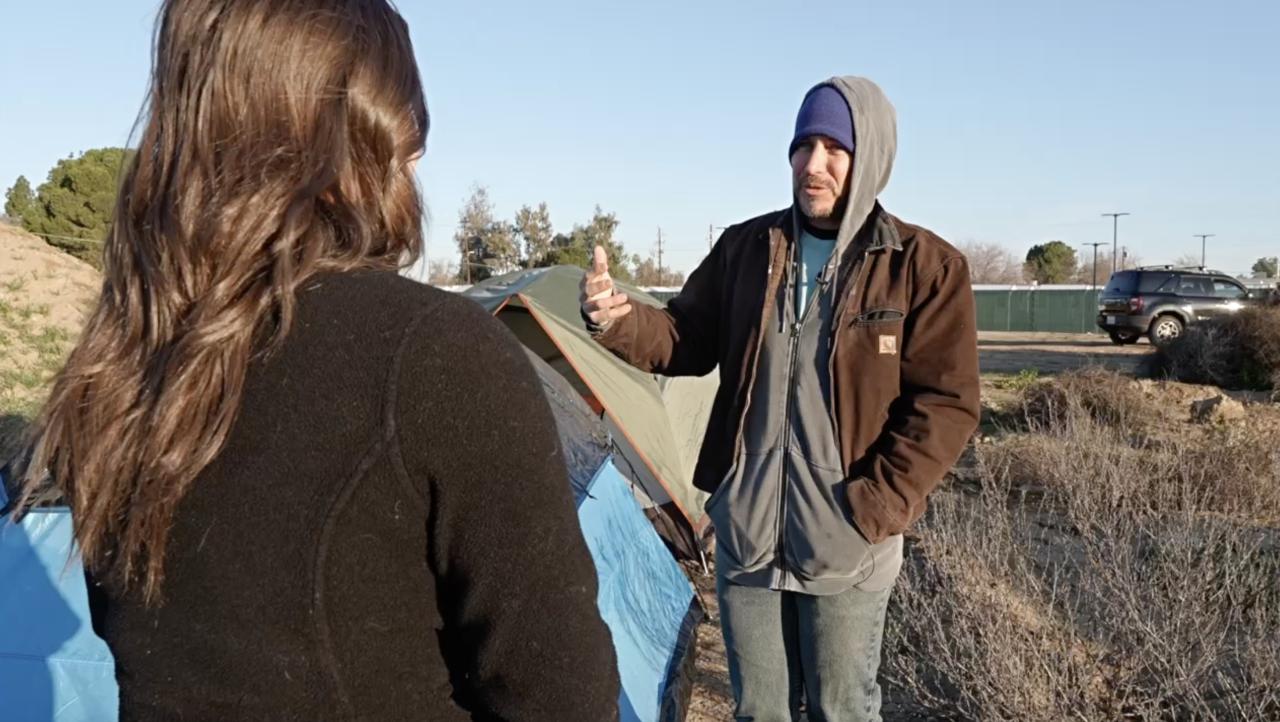- Video shows Hope the Mission’s Krissylee Delpina spent 40 hours living in the riverbed to better understand the impact the new tiny homes community will have on Oildale.
- Hope the Mission invited the community out Friday to tour the new tiny homes and learn more about how things will operate.
Hope the Mission’s Krissylee Delpina spent 40 hours living in the riverbed to better understand the impact the new tiny homes community will have on Oildale.
“I can’t tell you how many women I’ve seen sleeping out here on mattresses during the 40. It’s the lack of safety," she said. "No one understands the privilege of four walls and a locked door until you go without it.”
Delpina shared the toll those 40 hours took. As she and Hope the Mission’s president Rowan Vansleve neared the end of their experience, Delpina explained to us that even with someone she trusted, she never fully felt safe.
“I felt like I couldn’t sleep at night. Every little movement and sound I heard it was like, 'is that somebody coming?”
Hope the Mission invited the community out Friday to tour the new tiny homes and learn more about how things will operate.

“It just didn’t feel safe enough and this felt like our last resort," Vansleve said. "It was this horrible feeling sitting here knowing that so many people are on the streets."
Vansleve said Hope on Hart, the new tiny homes community, is a step in the right direction in addressing our homeless crisis.
He said simply getting people into shelter with food, access to heat and AC, and doors that they can lock and secure will go a long way to helping them be receptive of services like mental health, job assistance, case management and housing navigation.
Once they’re ready to be placed in a housing option, those services will carry over.
Oildale resident Julie Carter attended the ribbon cutting for Hope on Hart. She initially protested the tiny homes when they were first proposed, but said she’s coming around especially after learning more about those who are running it.
“It’s nice to hear Hope the Mission talk," she said. "I did meet a case worker who’s going to be on site and I want to have a good relationship with them as a neighbor.”
Delpina said having experienced just a fragment of what those on the streets live, she understands how so many could slip further into a cycle of hopelessness. She said the homes are a step forward is getting people off the streets and on track to housing and recovery by keeping them safe, sane, and sober.
Stay in Touch with Us Anytime, Anywhere:



